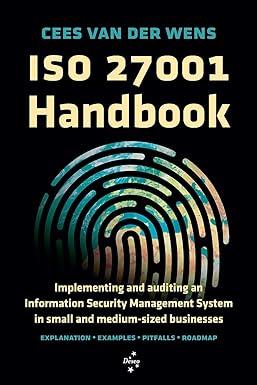Question
CASE Ultimate Office Products Ultimate Office Products was an old, established manufacturing company in the turbulent office products industry. Discount merchandisers and office product superstores
CASE
Ultimate Office Products
Ultimate Office Products was an old, established manufacturing company in the turbulent office products industry. Discount merchandisers and office product superstores were spreading rapidly and altering the traditional distribution channels once dominated by wholesalers and smaller retail stores. The growing power of the superstores was forcing manufacturers to improve customer service. The traditional manufacturers were being challenged by new companies more willing to cut prices and use technologies favored by the superstores, such as electronic orders and billing. Ultimate Office Products was losing market share and profits were declining.
Richard Kelly was the director of information systems, a newly created position in the company. When the CEO met with Richard to discuss his new responsibilities and objectives, she explained that it was essential to speed up order processing and improve customer service. Richard knew that the order processing system used by the company was obsolete. He prepared a plan to automate the system and got approval from the CEO for it. Then, he purchased new computer workstations and a software package to support them. The software would enable customers to make electronic orders, and it would improve order processing, billing, and inventory control. However, months after the equipment and software arrived, it was still waiting to be used. The managers from sales, production, accounting, shipping, and customer service could not agree about the requirements of the new system, which was necessary to get it operating. These managers were Richards peers, and he had no direct authority over them. Even though he encouraged cooperation, meetings among the managers usually ended with heated accusations about who was responsible for the companys problems. Most of the managers disagreed about the reason for the delays in filling orders, and some questioned the need for an expensive new system. Meanwhile, the CEO was becoming impatient about the lack of progress. She made it clear that after spending a small fortune on new technology, she expected Richard to find a way to resolve the problem. Richard decided it was time to take a different approach.
His first step was to gather more information about the reasons for delays in processing and filling orders. He began by having his staff map the workflow from the time orders were received until the filled orders were shipped. As he suspected, many unnecessary activities created bottlenecks that could be eliminated to speed up the process. The problems extended across functional boundaries and required changes in all departments. The preliminary results were presented to the CEO, who agreed on the need for dramatic improvements and authorized Richard to begin reengineering the process. Despite having the support of the CEO, Richard knew that widespread commitment would be needed for major changes to be successful. Richard met with the department managers to get their assistance in forming some cross-functional task forces. Although he knew that one task force would probably be enough to determine what changes were needed, he wanted to involve more people in the change process so that they would understand and support it. An outside consultant was secured to advise the task forces in their work.
Each task force examined a different aspect of the problem. They analyzed processes, met with key customers to learn what they wanted, and visited other companies to learn how they processed orders more efficiently. As people began working together to understand the system, they began to realize how serious the problems were. The participants were able to put aside their functional biases and cooperate in finding ways to improve efficiency and customer service. Each team made recommendations to the steering committee, composed of Richard and the department managers. The CEO also attended these meetings to emphasize their importance. When one of the department managers opposed a change, everyone in the meeting looked at the CEO, who made it clear that she supported the task force recommendation. Within a year, the company eliminated many of the steps formerly required to process an order, and the average number of days to fill an order was reduced by nearly half. Many more orders were being made electronically, and most mistakes in the billing process were eliminated. As people discovered that they could actually change things for the better, many of them volunteered to serve on teams that would continue to look for ways to improve quality and customer service.
Copyright @ 1996 by Gary Yukl
Questions
- Why did Richard fail in his first attempt to implement change?
- Identify subsequent actions by Richard that were more effective for implementing change in the organization.
- Evaluate the change leadership provided by the CEO.
Step by Step Solution
There are 3 Steps involved in it
Step: 1

Get Instant Access to Expert-Tailored Solutions
See step-by-step solutions with expert insights and AI powered tools for academic success
Step: 2

Step: 3

Ace Your Homework with AI
Get the answers you need in no time with our AI-driven, step-by-step assistance
Get Started


